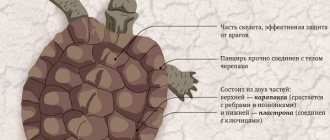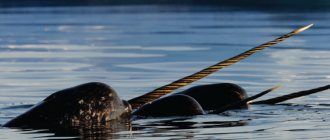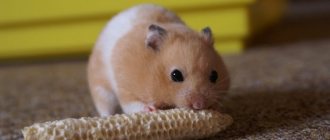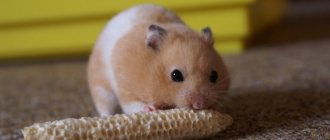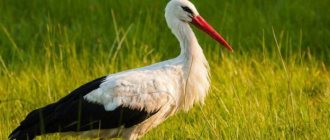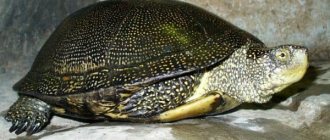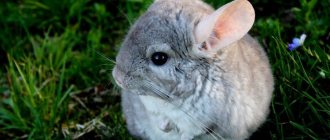| Latin name: | Spinus |
| English name: | Siskin |
| Kingdom: | Animals |
| Type: | Chordata |
| Class: | Birds |
| Squad: | Passeriformes |
| Family: | Finches |
| Genus: | Siskins |
| Body length: | 11-13 cm |
| Wing length: | 8-11 cm |
| Wingspan: | 20-23 cm |
| Weight: | 12-14 g |
- 7.1 What will the siskin need?
Description of the bird
It is not surprising that the siskin - a small funny songbird - is very often called a siskin. Yes, and the song “Chizhik-Pizhik” is also about him. It is enough to see and hear this bird once to understand what causes such an affectionate attitude towards it.
Siskins belong to the finch family, which includes many wonderful singers. The size of this bird is small: only about 12-15 g body weight, body length - 12 cm, wingspan - 20-22 cm.
— Advertising —
And, despite the fact that siskins are very well camouflaged in the treetops, when you see this bird, it is very easy to recognize it. The plumage of an adult male siskin has a bright green-yellow coloring of the head, neck and abdomen. The dark wings are also decorated with lemon spots. And males, unlike females, “wear” a black cap on their heads. Females and young males are colored brownish-brown, sometimes with yellow splashes.
Where do siskins live?
The habitat of all types of siskins is very wide. This includes Europe, Asia, North America, and South America. That is, these birds are found almost everywhere. They prefer to live in mixed forests with tall trees, where they feel safe and can hide well, as well as in high mountains.
Is the siskin a migratory bird or a sedentary one?
— Advertising —
Siskins are typical migratory birds. At the end of September they gather in large flocks and move south – closer to the warmth. That is why in winter you can often find siskins, for example, in the Crimea. Only in very rare cases, if in their habitat these birds find an ice-free body of water - a river, lake, stream - they can stay near it for the winter.
What does a siskin look like?
The siskin species includes 19 varieties. What distinguishes them is, first of all, their distribution area, as well as their color and behavioral characteristics. The most famous types:
Golden siskin
A North American species, also known as the American goldfinch. For the winter, these birds migrate to Mexico and change color. Lemon yellow males turn pale green.
Mexican Siskin
Inhabitant of high mountain regions of North and South America (from 900 m). These birds are very careful and difficult to spot in nature.
Pine Siskin
Found in the mountains of North America. It is colored paler than other types of siskins, in brown-yellow tones.
Fire Siskin
The most striking representative of siskins. Its head, wings and tail are jet black, and the rest of its plumage is bright carmine red. This species is slightly larger than the common siskin. Distributed in northern Venezuela, where it is a protected species.
Nutrition
In the natural environment, the siskin's diet includes plant and animal foods. In spring and summer, siskins feed on small insects, caterpillars, aphids, and butterflies. By autumn, as they ripen, the seeds of deciduous and coniferous trees - alder, birch, poplar, fir, pine, spruce - become a delicacy for birds. Dandelions and poppy are of nutritional value.
Siskins eat sunflower seeds in winter
The thin, pointed beak of the siskin allows it to obtain seeds of asteraceous plants - thistle, cornflower, meadowsweet, and sorrel. Birds extract nuts from the cones of coniferous plants. Hook-shaped claws hold birds on tree branches, even when hanging upside down.
Male and female: main differences
In siskins, sexual dimorphism is moderately expressed. As usual, male siskins show off their bright and attractive emerald-golden plumage, while females look modest and do not attract attention. This natural cunning is necessary so that the brownish-brown female is not noticeable in the nest while incubating eggs.
Reproduction
An ordinary domestic siskin does not lose its reproductive function in captivity, but for this it is necessary to select partners and be sure to provide them with all the conditions for creating and forming a cozy nest, incubating eggs and caring for future offspring.
It is important to insulate the walls of the enclosure and close it tightly, building the foundations to strengthen the nest and providing the birds with the necessary materials to create a future house; for this, dry grass and moss, small pieces of poultry down and feathers for insulation are placed at the bottom of the cage.
Siskins at home
Siskins are real favorites among songbird connoisseurs.
Firstly, they sing a lot and with pleasure almost 10 months a year. It’s simply impossible to get bored with such a bird at home!
Secondly, siskins very quickly get used to captivity and become truly tame birds. The owners of the siskin will always be able to safely leave the cage open - the birds will always return to their place and will not stain the room. In addition, the siskin can be taught various tricks - drinking water from the owner’s mouth, for example.
Thirdly, if all the necessary conditions are created for siskins, they can also hatch chicks in captivity.
And finally, if in the wild birds usually live for 3 years, then at home they live up to 10-12 years.
What will Chizhu need?
Siskins do not need a lot of space - the cage can be small, like for a parrot. The main thing is that it does not stand in bright sunlight or drafts.
Siskins also love water treatments, so in addition to the usual drinking bowl, they will need a special container of water for bathing.
It is better to keep birds in pairs or flocks. You can also add neighbors to the siskins. These birds will not only receive guests, but can also learn their singing skills.
In order for the birds to start nesting, they need to create a secluded corner of plywood in the cage, decorate it with spruce and pine branches, and leave material for construction - twigs, feathers, blades of grass.
In nature, siskins lay 2 clutches per year. At home, they also lay up to 6 small light-colored eggs with brown spots and stripes. The female incubates them for 12 days. And then it takes about 2 weeks for the chicks to grow up. Parents feed their babies mainly protein foods - caterpillars and insects.
Eating at home
Siskins are absolutely picky when it comes to food. Like all granivorous birds, they will need plenty of clean drinking water. You can feed siskins with any mixtures of seeds and grains (birch, poppy, flax, alder and others). In addition, greens, fruits and vegetables are added to the diet. For example, cabbage, carrots, apples.
Characteristic
At first glance, the siskin is inconspicuous, quiet and has a timid character. But after a short acquaintance, the bird shows interest and friendliness, causing positive emotions in its admirers.
The siskin sings songs consisting of a variety of trills and often imitates the singing of other birds, especially tits.
And in free flight, the siskin tirelessly makes its calling sound, similar to “chilik”, or “siskin”, most likely this is where the custom came to call this bird - “siskin-fawn”, about which that very song was composed.
After this cry, there is usually a chirping noise or something similar.
Interesting fact! In nature, siskins make their nests in the lush branches of tall spruce trees, hiding their offspring from prying eyes. Therefore, it is unlikely that anyone will be lucky enough to stumble upon the shelter of a siskin - it knows how to camouflage itself perfectly.
Siskin in flight
Interesting facts about siskins
- Siskins are real masters of camouflage; in nature, they arrange their nests in such a way that it is almost impossible to find them; that’s why they even say that siskins hide special pebbles in their nests that make them invisible;
- in addition to its own song, the siskin can easily and very reliably parody other birds if it lives next door to them;
- Siskins not only quickly get used to captivity, but also remember well the person who is looking after them, rejoice at his arrival and greet him with singing.
Natural enemies
Siskins are very difficult to notice, especially since their nests, which are carefully camouflaged from enemies, are located at a height of 7 to 17 meters above the ground.
Made up of small twigs and blades of grass, the outside is shrouded in cobwebs, lichen and moss, making the nest almost indistinguishable from tree branches. The main danger to the siskin can be birds of prey, such as a falcon or owl, which can attack during nesting or before and after hatching, when eggs and small siskins are most vulnerable.
Return to content

